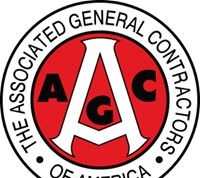NEW SURVEY SHOWS SIGNIFICANT FLAWS IN NATION’S APPROACH TO PREPARING WORKERS FOR CONSTRUCTION CAREERS AND HOW THAT HURTS THE ECONOMY
88 Percent of Construction Firms Having a Hard Time Finding Workers to Hire, Undermining Efforts to Build Infrastructure & Other Projects as Firms Boost Pay, Embrace AI to Cope with Labor Shortages
Washington – RealEstateRama – Few candidates have the basic skills needed to work in high-paying construction careers, forcing short-staffed contractors to find new ways to keep pace with demand and undermining efforts to build infrastructure and other projects, according to the results of a workforce survey conducted by the Associated General Contractors of America and Autodesk. The results highlight significant shortcomings in the nation’s approach to preparing workers for careers in construction.
“The biggest takeaway from this year’s Workforce Survey is how much the nation is failing to prepare future workers for high-paying careers in fields like construction,” said Ken Simonson, the association’s chief economist. “It is time to rethink the way the nation educates and prepares workers.”
Simonson noted that 85 percent of construction firms report they have open positions they are trying to fill. Among those firms, 88 percent are having trouble filling at least some of those positions – particularly among the craft workforce that performs the bulk of onsite construction work.
All types of firms are experiencing these challenges. Largely similar results were reported by contractors that use exclusively union craft labor and by firms that operate as open-shop employers; by firms with $50 million or less in annual revenue and ones with more than $500 million in revenue; by companies in all four regions of the country; and by contractors doing building construction, highway and transportation projects, federal and heavy work, or utility infrastructure.
One of the main reasons labor shortages are so severe, Simonson added, is that most job candidates are not qualified to work in the industry. He said a “shocking” 68 percent of firms report applicants lack the skills needed to work in construction. In addition, one-third of firms report candidates cannot pass a drug test.
Workforce shortages are adding to the impacts of supply chain disruptions that have made it difficult for firms to get materials delivered on time and that are driving up the cost of those materials. While these shortages have recently shown signs of abating, 65 percent of firms report projects they work on have been delayed because of supply challenges and 61 percent have been delayed because of labor shortages.
Supply chain problems and labor shortages are making construction more expensive, undermining demand for certain types of projects, the economist noted. Half the respondents report owners canceled, postponed or scaled back projects due to increasing costs. Meanwhile, 22 percent of firms report projects were impacted due to lengthening or uncertain completion times.
Many construction firms are taking steps to cope with and try to overcome workforce shortages. Eighty-one percent of firms have raised base pay rates for their workers during the past year. In addition to raising pay, 44 percent are providing incentives and bonuses and 26 percent have also improved their benefits packages.
Firms are also getting more creative when it comes to recruiting workers. Sixty-three percent of survey respondents – up from 39 percent in the 2022 survey – report they added online strategies, like using social media or targeted digital advertising, to connect better with younger applicants.
Contractors are also increasing investments in their internal training programs in an effort to address the fact many candidates lack the basic hard and soft skills needed to be successful. Forty-one percent of firms are boosting spending on training and professional development programs, 25 percent are enhancing their online and video training capabilities and 14 percent are using augmented and virtual reality technology to better train workers.
Technology is also playing an important role in helping firms cope with labor shortages and other challenges they are facing, Simonson added. Ninety-one percent of firms agree that their employees need to possess digital technology skills to be successful as firms adopt new labor-saving technologies. Nearly three-quarters of responding firms say at least half of the people they are hiring possess the technology skills they need. And three out of four respondents agree that using of cutting-edge technology helps them recruit talent.
When it comes to two broad categories of technology—artificial intelligence (AI) and robotics—on construction jobs in the next five years, almost half of respondents (44 percent) state that AI and robotics will positively impact construction costs by automating manual, error-prone tasks. In addition, 41 percent say AI and robotics will improve the quality of construction jobs and make workers safer and more productive.
“For potential hires, a career opportunity in construction should mean an opportunity to work with advanced technology and perform safe, meaningful work,” said Allison Scott, director of customer experience & industry advocacy at Autodesk. “As firms adopt more digital technologies and create stronger classroom and training pathways, we’ll begin to see a new generation enter the industry equipped with the tools and skills needed to tackle construction’s largest challenges.”
Association officials noted that in virtually every community there are open construction positions that pay better than the average job and are vital to local economic growth. But they said too few schools offer classes in construction or even expose students to the opportunities that exist in the field.
They added that public officials need to significantly boost investments in programs that expose students to the opportunities and skills needed for careers in construction. This will put more students on a path to professional and financial success and address the needs of local employers.
“Boosting funding for programs that expose students to skills in careers like construction will signal to students that there are multiple paths to success in life, and one is not better than another.” said Simonson.
The construction economist added that the association will continue pushing federal officials to narrow an education funding gap that currently invests five times as much encouraging students to enroll in college as it does preparing them for fields in construction. He added, however, that it will take years to rebuild the nation’s career and technical education. In the meantime, the association is calling for immigration reforms to allow more people to lawfully enter the country and work in construction.
The association and Autodesk conducted the Workforce Survey in late July and early August. Over 1,400 firms completed the survey from a broad cross-section of the construction industry, including union and open shop firms of all sizes. The 2023 Workforce Survey is the association’s 11th annual workforce-related survey.
Click here for survey materials including national, regional and state fact sheets, survey analysis and event remarks.
###













